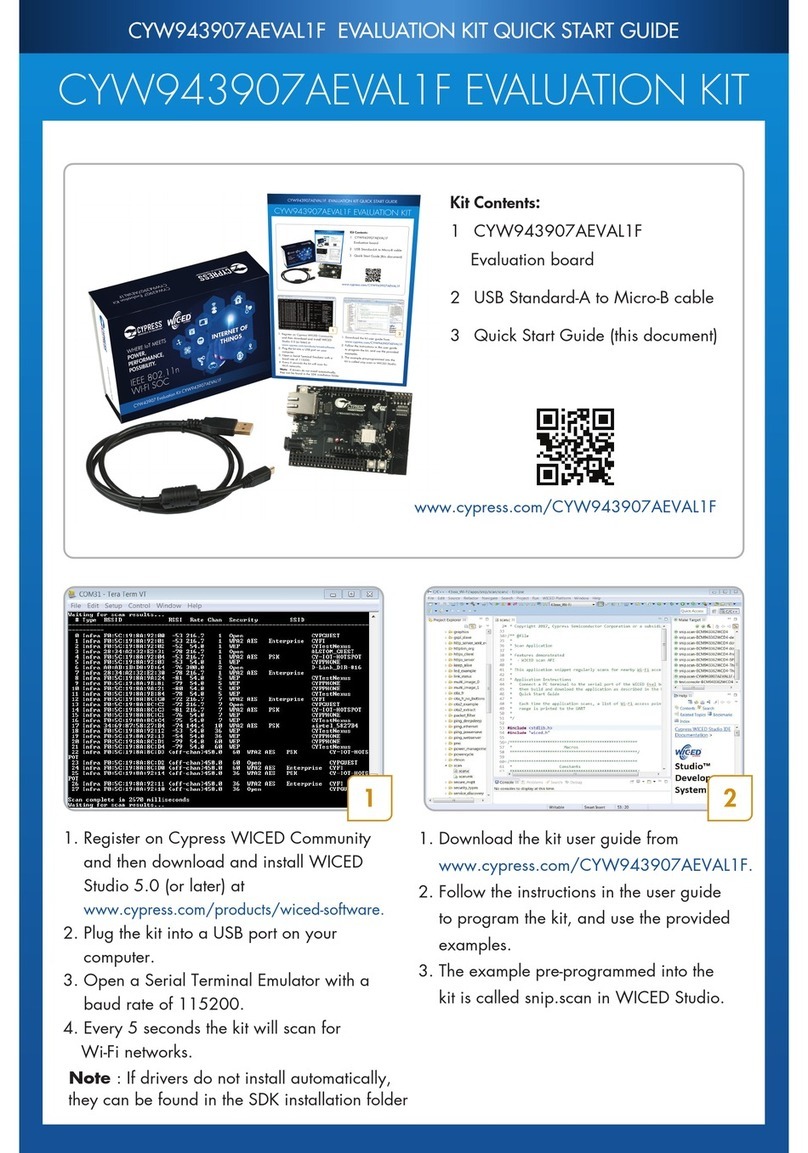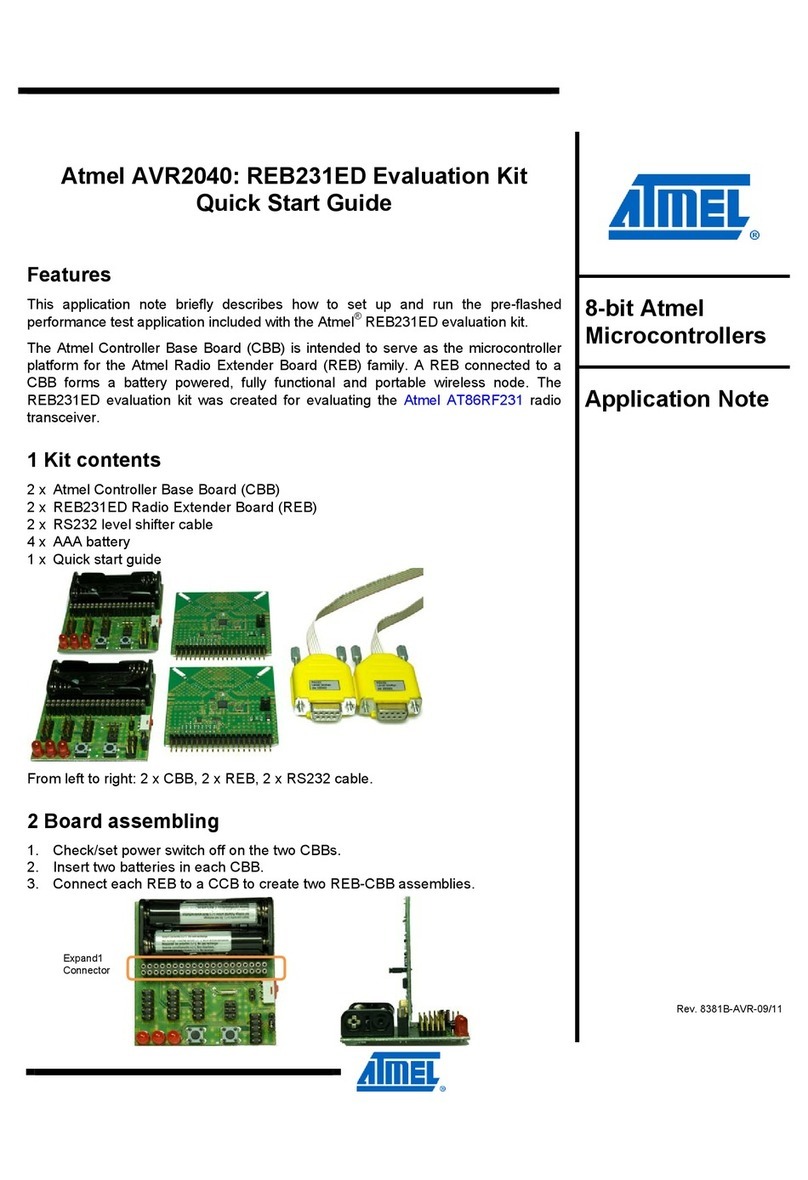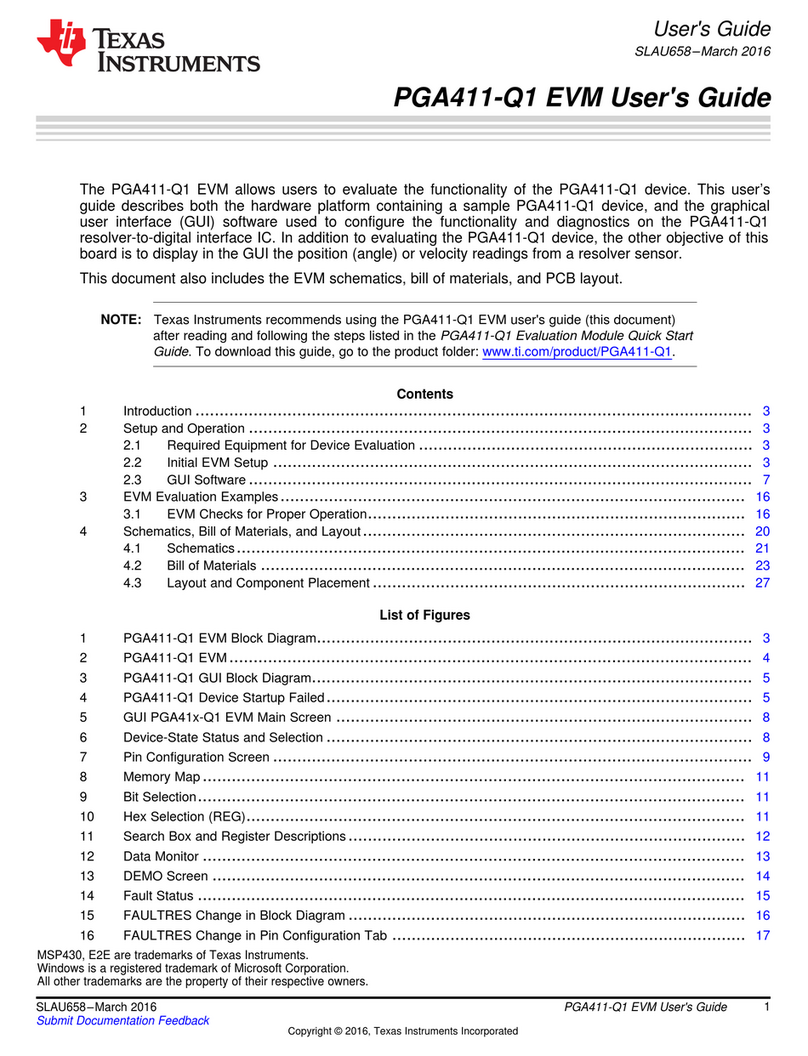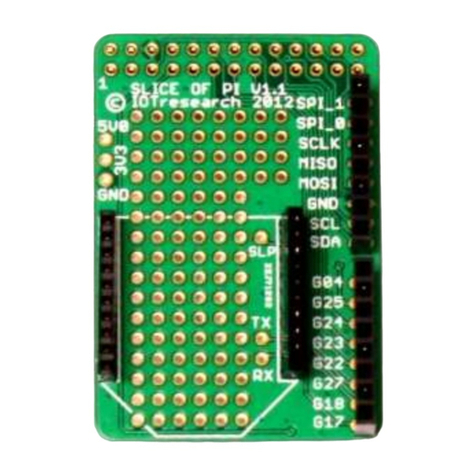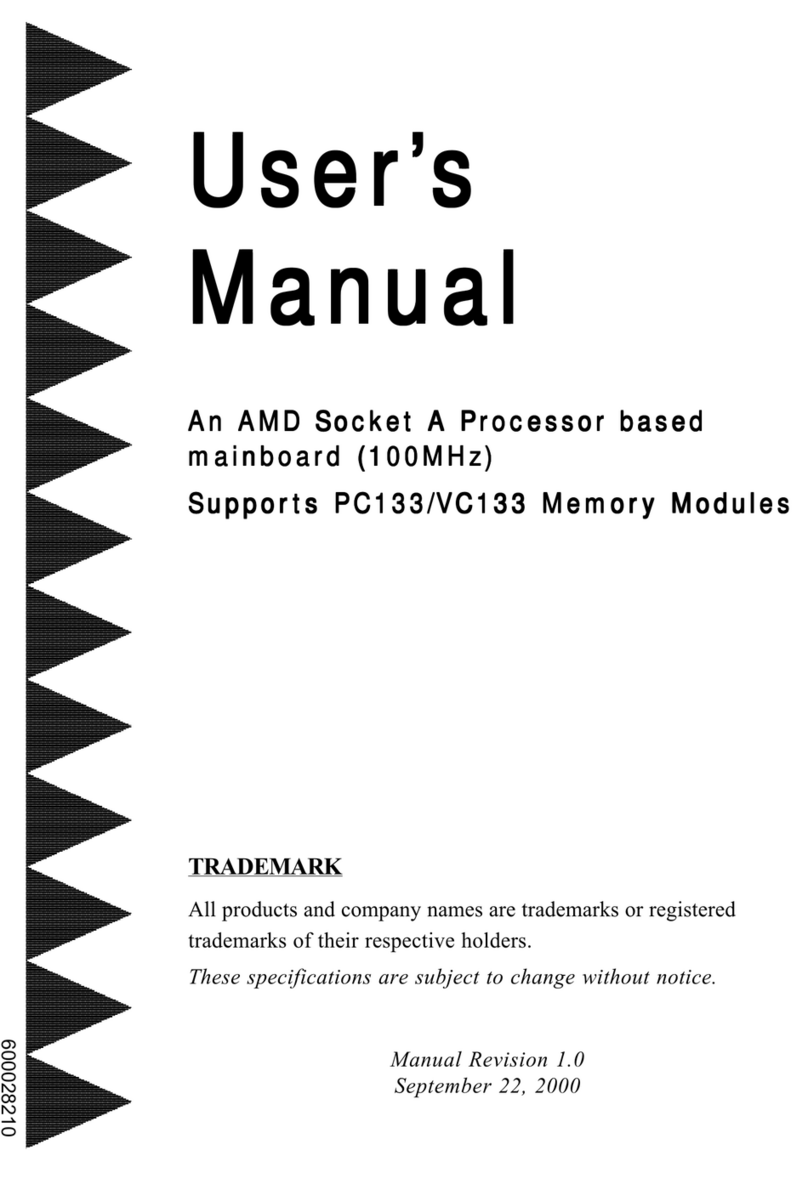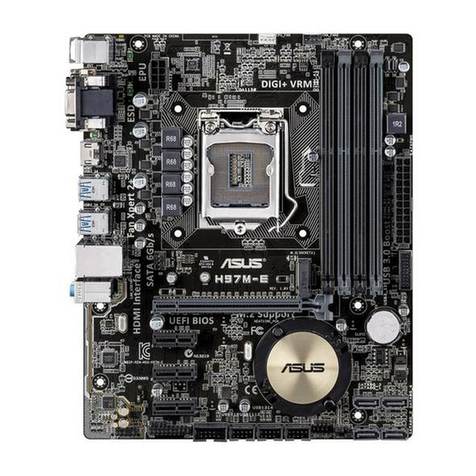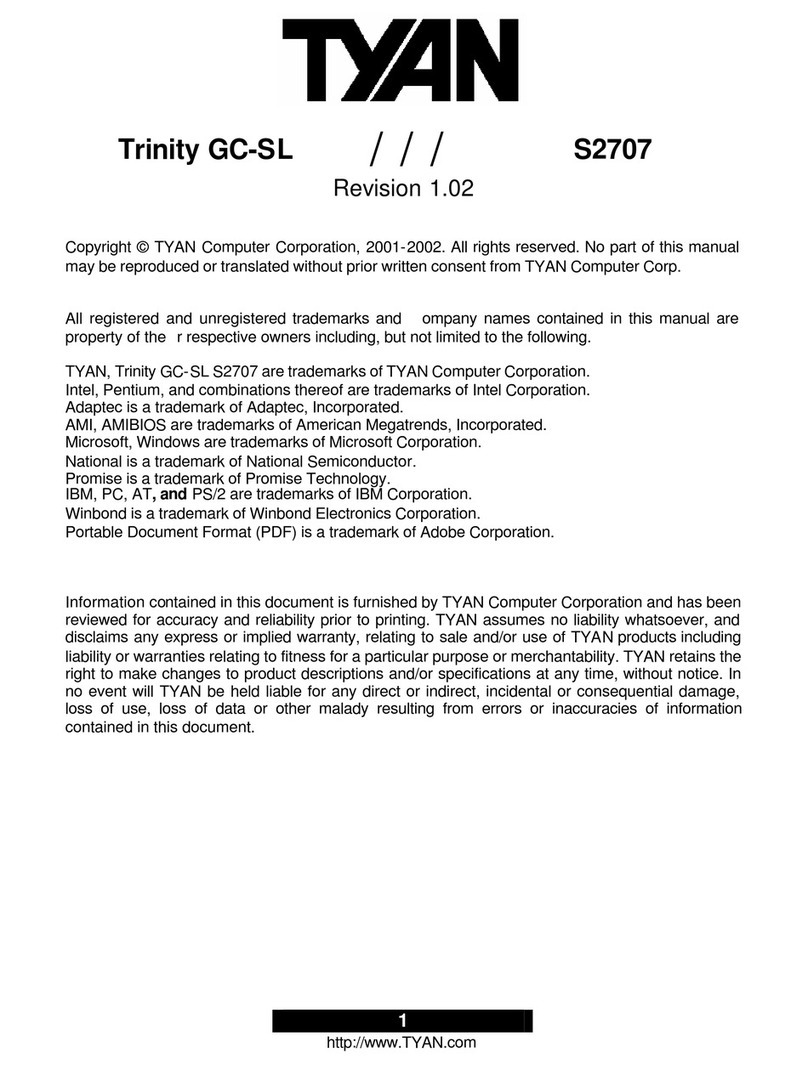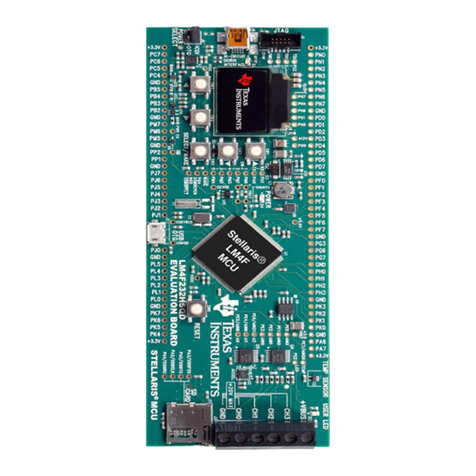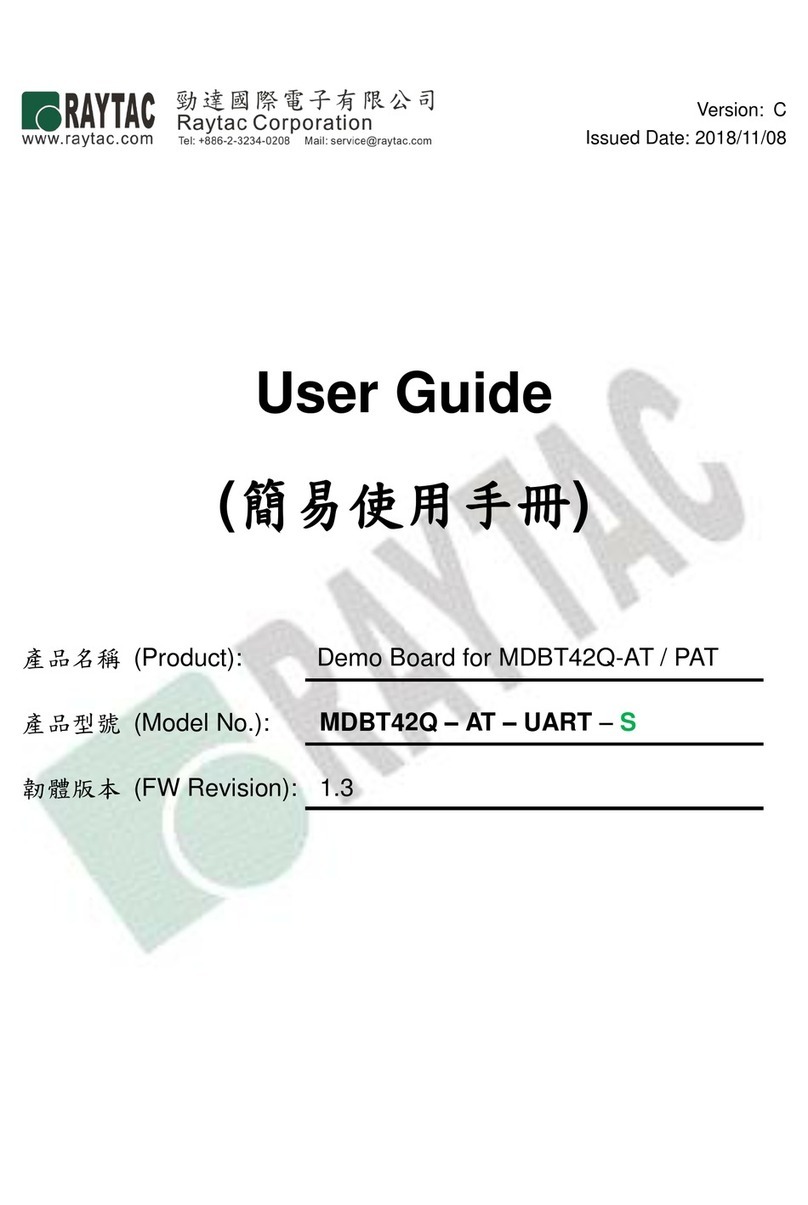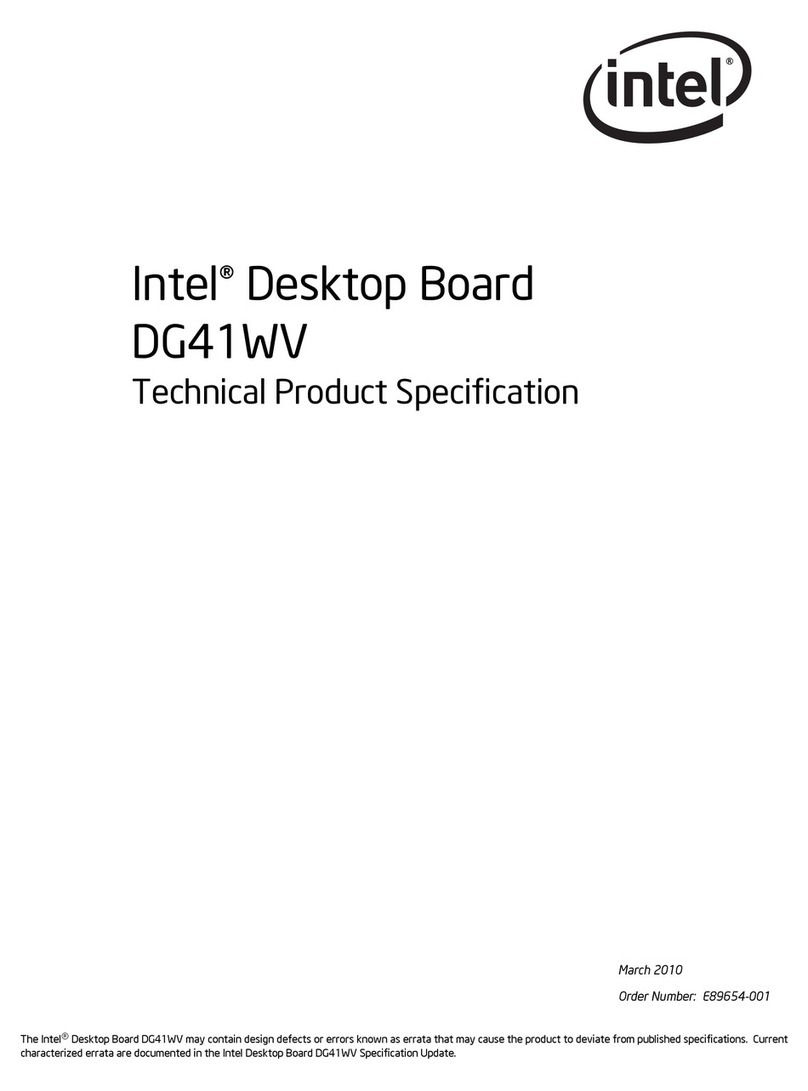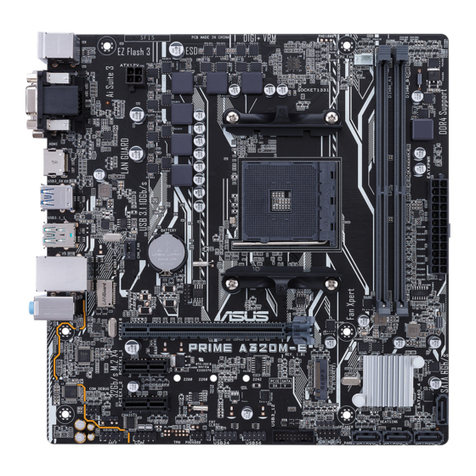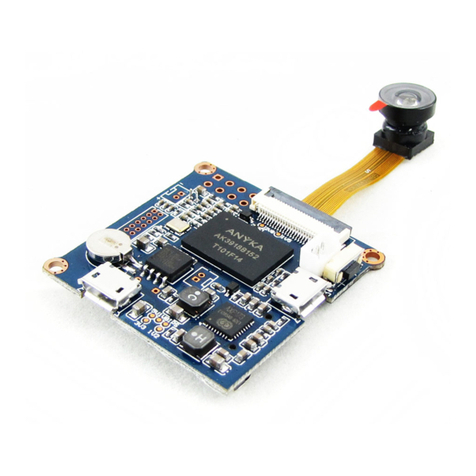SMH Technologies FlashRunner FR03 User manual

FR03
User’s Manual


FlashRunner FR03
High-Performance,
Standalone In-System
Programmer
User’s Manual
Revision 1.1 — June 2008
Revision 1.3 - Apr 2015
Copyright © 2015 SMH Technologies TM
DC10731

We want your feedback!
SMH Technologies is always on the lookout for new ways to improve its
Products and Services. For this reason feedback, comments,
suggestions or criticisms, however small, are always welcome.
Our policy is to comply with all applicable worldwide safety and EMC/EMI regulations. Our products are
certified to comply to the European New Approach Directives and the CE mark is applied on all our
products.
This product as shipped from the factory has been verified to meet with requirements FCC as a CLASS
A product.
In a domestic environment, this product may cause radio interference in which case the user may be
required to take adequate prevention measures.
Attaching additional wiring to this product or modifying the product operation from the factory default as
shipped may effect its performance and cause interference with other apparatus in the immediate
vicinity. If such interference is detected, suitable mitigating measures should be taken.
SMH Technologies
Web: http://www.smh-tech.com
Important
SMH Technologies reserves the right to make improvements to FlashRunner, its documentation and software routines, without
notice. Information in this manual is intended to be accurate and reliable. However, SMH Technologies assumes no
responsibility for its use; nor for any infringements of rights of third parties which may result from its use.
SMH TECHNOLOGIES WILL NOT BE LIABLE FOR DAMAGES RESULTING FROM LOSS OF DATA, PROFITS, USE OF
PRODUCTS, OR INCIDENTAL OR CONSEQUENTIAL DAMAGES, EVEN IF ADVISED OF THE POSSIBILITY THEREOF.
Trademarks
SMH Technologies is the licensee of the SofTec Microsystems trademark.
All other product or service names are the property of their respective owners.
Written by Paolo Xausa
Our policy at SMH Technologies is to comply with all applicable worldwide safety and
EMC/EMI regulations.
This product is certied to comply with the 2004/108/EC Directives and is in conformity
with the EN6100-6-2 and the EN61000-6-3 standards.
In a domestic environment, this product may cause radio interference in which case the
user may be required to take adequate prevention measures.
Attaching additional wiring to this product or modifying the product operation from the
factory default as shipped may effect its performance and cause interference with other
apparatus in the immediate vicinity. If such interference is detected, suitable mitigating
measures should be taken.
Disposal of Waste Electrical & Electronic Equipment (WEEE).
In the European Union, this label indicates that this product should not be disposed of
with household waste. It must be deposited in an appropriate facility to allow for recovery
and recycling. For more detailed information about the recycling of this product, please
contact your local city ofce, household waste disposal service or the retail store where
you purchased this product.

FlashRunner FR03 User's Manual
Contents
0Before Starting 9
0.1 Important Notice to Users 9
0.2 Safety 9
0.3 Getting Technical Support 10
0.4 Additional Documentation 10
1Overview 11
1.1 What is FlashRunner FR03? 11
1.1.1 General Features 12
1.1.2 Hardware Features 12
1.1.3 Software Features 12
1.2 Package Checklist 13
1.3 Hardware Overview 13
1.4 Programming Algorithms and Licenses 14
1.5 Upgrading the Firmware 14
2System Setup 15
2.1 Overview 15
2.2 Software Setup 15
2.3 Hardware Setup 16
2.3.1 Interfacing FlashRunner with Your Test/Programming
Equipment 16
2.3.2 Connecting FlashRunner to the Host System 17
2.3.3 Powering Up FlashRunner 17
2.4 Step-by-Step Tutorial: Sending Commands to FlashRunner 17

Contents
3Connectors 23
3.1 Overview 23
3.2 ISP Connector 23
3.3 Control Connector 25
3.4 RS-232 Connector 26
3.5 Power Connector 27
4Technical Specifications 29
4.1 Absolute Maximum Ratings 29
4.2 DC Characteristics and Functional Operating Range 30
4.3 AC Characteristics 31
4.4 Physical and Environmental Specifications 32

FlashRunner FR03 User's Manual
Index of Figures
Figure 1.1: FlashRunner FR03 11
Figure 1.2: Hardware Overview 13
Figure 2.1: FlashRunner Control Panel, Communication Settings 18
Figure 2.2: FlashRunner Control Panel, Target Device Configured 19
Figure 2.3: FlashRunner Control Panel, Binary File Conversion 20
Figure 2.4: FlashRunner Control Panel, File Transfer 21
Figure 2.5: FlashRunner Control Panel, Target Device Programmed 22
Figure 3.1: ISP Connector 24
Figure 3.2: Control Connector 25
Figure 3.3: RS-232 Connector 26
Figure 3.4: Power Connector 27
Figure 4.1: Load Conditions 31


FlashRunner FR03 User's Manual
Index of Tables
Table 3.1: ISP Connector Signals 25
Table 3.2: Control Connector Signals 26
Table 3.3: RS-232 Connector Signals 27
Table 4.1: Absolute Maximum Ratings 29
Table 4.2: DC Characteristics and Functional Operating Range 30
Table 4.3: AC Characteristics 31
Table 4.5: Physical and Environmental Specifications 32


0
FlashRunner FR03 User's Manual
0 Before Starting
i
Note: the FlashRunner System Software CD-ROM and/or
SofTec Microsystems website (www.softecmicro.com) may
contain an updated version of this user’s manual. Please
check before continuing reading this documentation.
0.1 Important Notice to Users
While every effort has been made to ensure the accuracy of all information in
this document, SMH Technologies assumes no liability to any party for any
loss or damage caused by errors or omissions or by statements of any kind
in this document, its updates, supplements, or special editions, whether such
errors are omissions or statements resulting from negligence, accidents, or
any other cause.
0.2 Safety
FlashRunner is a low-voltage device. However, when integrating it inside an
automatic test equipment or when interfacing it with other systems, take all
precautions in order to avoid electrical shocks due to, for example, different
ground references.
Make all connections to the target system before applying power to the
instrument.
To protect FlashRunner against electrostatic discharge (ESD), always
connect yourself to earth (e.g. via wrist straps) when handling the
instrument.
Always store FlashRunner inside an antistatic bag when not in use.
9
Note: the FlashRunner System Software CD-ROM and/or
SMH Technologies website (www.smh-tech.com) may
contain an updated version of this user’s manual. Please
check before continuing reading this documentation.

Before Starting
00.3 Getting Technical Support
SMH Technologies is continuously working to improve FlashRunner
firmware and to release programming algorithms for new devices. SMH
Technologies offers a fast and knowledgeable technical support to all of its
customers and is always available to solve specific problems or meet
specific needs.
To get in touch with SMH Technologies, please refer to the contact
information below.
Phone: +39 0434 421111
Fax: +39 0434 639021
Technical Support: support@smh-tech.com
0.4 Additional Documentation
This user’s manual provides information about how to setup FlashRunner
FR03 and its hardware characteristics.
For information about FlashRunner commands and their syntax, including
specific commands for specific family of microcontrollers, please refer to the
FlashRunner Programmer’s Manual, included (in PDF format) in the
FlashRunner CD-ROM.
10

1
FlashRunner FR03 User's Manual
1 Overview
1.1 What is FlashRunner FR03?
FlashRunner FR03 is a high-performance, standalone In-System
Programmer specific for Flash-based microcontrollers and serial memories.
FlashRunner FR03 is targeted at production environments, easily interfaces
to your programming system or Automatic Test Equipment (ATE) and can
work either in full standalone mode or controlled by a host system.
Figure 1.1: FlashRunner FR03
11

1
Overview
1.1.1 General Features
Fastest programming algorithms (as fast as target device’s memory
technology limit), approved by silicon manufacturers;
Easy ATE integration;
Standalone operations (projects and code images stored on a memory
card);
Also controllable by any host system via RS-232;
Supports most ISP protocols (BDM, JTAG, SPI, I2C, MON, ICC, SCI,
etc.);
Flexible, fully configurable;
Compact and robust design for production environments;
Data integrity guaranteed (every data transfer to/from the host system
or Secure Digital card is CRC tagged).
1.1.2 Hardware Features
7.5V DC power supply input;
Five digital I/O lines;
Two digital I/O or analog output lines;
One programmable output voltage (0 to 5.5V, 0.5A);
One programmable clock output;
Secure Digital memory card (up to 2 GB);
I/O protection;
One command inputs (START);
Three status outputs (FAIL, PASS, BUSY);
RS-232 channel.
1.1.3 Software Features
Fully autonomous standalone mode thanks to its SD memory card;
Controllable by any host system through a terminal utility and simple
ASCII protocol;
One hardware-selectable project (script);
Unlimited software-selectable projects (scripts);
Erase, blank check, program, read, verify, oscillator trimming, etc.
12

1
FlashRunner FR03 User's Manual
1.2 Package Checklist
The FlashRunner FR03 package includes the following items:
FlashRunner FR03 unit, including an SD card already pre-installed with
the programming algorithm you specified at the time of purchase;
Serial cable for connection to the host PC;
FlashRunner “System Software” CD-ROM, containing the FlashRunner
Control Panel utility and the FlashRunner Programmer’s Manual in PDF
format;
This user’s manual;
Warranty card.
1.3 Hardware Overview
The figure below illustrates where the various FlashRunner FR03 connectors
and controls are located.
SD Card
Power and
Instrumen
t
Status LEDs
Programming
Status LEDs
“RS-232”
Connector
“ISP”
Connector
“CONTROL”
Connector
“START”
Push Button
“POWER”
Connector
Figure 1.2: Hardware Overview
13

1
Overview
1.4 Programming Algorithms and Licenses
FlashRunner FR03 comes already preinstalled with programming algorithms
(and relative programming licenses) for the silicon manufacturer you
specified at the moment of purchase. While you can’t install new licenses,
the programming algorithms can be updated if new versions become
available.
Programming algorithms and license files are stored in the SD card (see the
FlashRunner Programmer’s Manual for more information).
i
Note: FlashRunner FR03 uses a proprietary file system. The
contents of the FlashRunner FR03 SD card are not readable
by a PC.
1.5 Upgrading the Firmware
The FlashRunner firmware can be easily upgraded using the provided
Control Panel utility. For more information, please refer to the FlashRunner
Programmer’s Manual.
14

2
FlashRunner FR03 User's Manual
2 System Setup
2.1 Overview
i
Note: the example shows how to set up the system for
programming a Freescale MC68HC908QY4 microcontroller.
For how to connect to other target devices, please refer to
the FlashRunner Programmer’s Manual.
This chapter will explain how to set up FlashRunner FR03 for the first time.
Although FlashRunner is typically used for standalone operations
(Standalone mode), the examples in this chapter will use the host system to
send commands to FlashRunner (Host mode).
When moving FlashRunner to the production environment, you can take full
advantage of the instrument’s SD card to make the instrument work without
being controlled by the host system.
For more information about Standalone mode and Host mode, see the
FlashRunner Programmer’s Manual.
2.2 Software Setup
The FlashRunner system software setup installs all of the required
components to your hard drive. These components include:
The FlashRunner Control Panel utility;
Script examples;
Documentation in PDF format.
To install the FlashRunner system software:
15

2
System Setup
Insert the “System Software” CD-ROM into your computer’s CD-ROM
drive;
A startup window will automatically appear. Choose “Install
Instrument Software” from the main menu. Follow the on-screen
instructions.
i
Note: to install the FlashRunner system software on
Windows 2000 or Windows XP, you must log in as
Administrator.
2.3 Hardware Setup
To set up FlashRunner FR03, you must follow the steps below, in the
indicated order:
1. Interface FlashRunner with your test/programming equipment;
2. Connect FlashRunner to the host system;
3. Power up FlashRunner;
4. Send FlashRunner commands via the FlashRunner Control Panel
utility.
2.3.1 Interfacing FlashRunner with Your Test/Programming Equipment
FlashRunner FR03 connects to your target board through signals grouped in
the “ISP” connector.
The specific ISP signals that must be routed from FlashRunner FR03 to your
target board depend on the specific target device. Typical connections for all
the device families supported by FlashRunner are shown in the FlashRunner
Programmer’s Manual.
Additional control signals (START, BUSY, PASS, FAIL) are grouped in the
“CONTROL” connector, and can be used if you want your test/programming
equipment to control FlashRunner through these lines.
16

2
FlashRunner FR03 User's Manual
2.3.2 ConnectingFlashRunner to the Host System
FlashRunner FR03 connects to the host system via RS-232.
2.3.3 Powering Up FlashRunner
Power up FlashRunner by connecting the output of a 7.5V power supply (not
included) to the “POWER” barrel connector. FlashRunner accepts any DC
voltage between 6.5V and 9V.
2.4 Step-by-Step Tutorial: Sending Commands to
FlashRunner
After setting up the hardware, you are ready to send commands to the
instrument. The following steps will guide you through the process of
launching your first FlashRunner commands using the provided FlashRunner
Control Panel utility. For detailed information about the FlashRunner Control
Panel utility, see the FlashRunner Programmer’s Manual.
i Note: the following steps show how to program a Freescale
MC68HC908QY4 microcontroller, and the details are
therefore specific for that microcontroller. However, the
procedures shown are general and will allow you get a feel
of how FlashRunner works.
1. Launch the FlashRunner Control Panel utility. Select Start > Programs
> > F lashRunner > Control Panel. The Control
Panel utility will open.
To establish a connection with FlashRunner, on the “Communication
Settings” section, select “FlashRunner serial version”, and specify
the COM port you are using and the baud rate (by default, FlashRunner
communicates at 115200 bps).
17
SMH Technologies

2
System Setup
Figure 2.1: FlashRunner Control Panel, Communication Settings
2. Click the “Connect” button. On the “Communication History”
section, note the commands that have been sent and received. In this
case, the SPING command is automatically sent to FlashRunner,
which replies with the PONG> string.
3. In the edit box below the communication history, type the following
commands (each followed by Return):
TCSETDEV FREESCALE MC68HC908QY4 HC08
TCSETPAR FOSC 16000000
TCSETPAR FDIV 4
TCSETPAR VDD 5000
These commands set, respectively, the target microcontroller, the
oscillator frequency, the internal divisor and the VDD voltage. In this
example, we used a 16 MHz oscillator, the internal divisor for
MC68HC908QY4 devices is fixed to 4, and the VDD is 5 V.
18
Table of contents
Other SMH Technologies Motherboard manuals

SMH Technologies
SMH Technologies Flashrunner FR3070A User manual
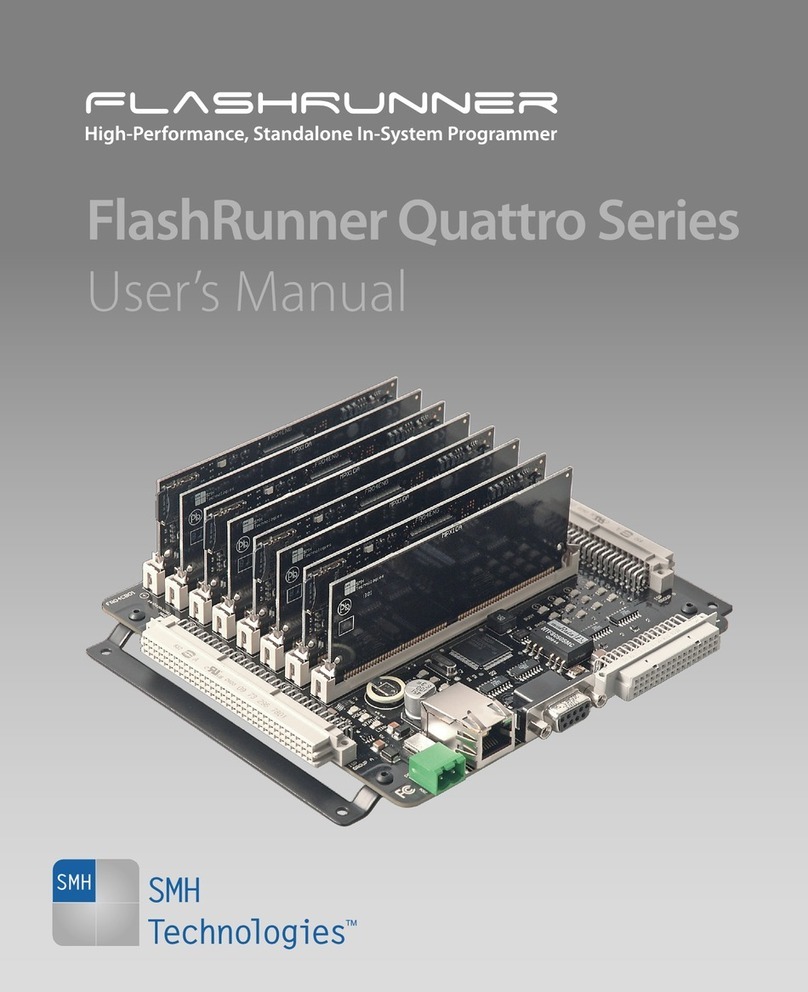
SMH Technologies
SMH Technologies FlashRunner Quattro Series User manual
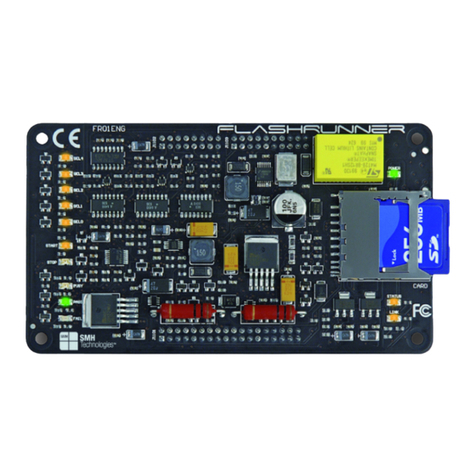
SMH Technologies
SMH Technologies FlashRunner FR01ENG User manual
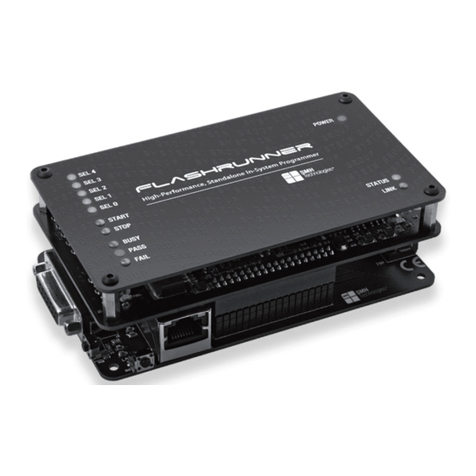
SMH Technologies
SMH Technologies Flashrunner FR01LAN User manual
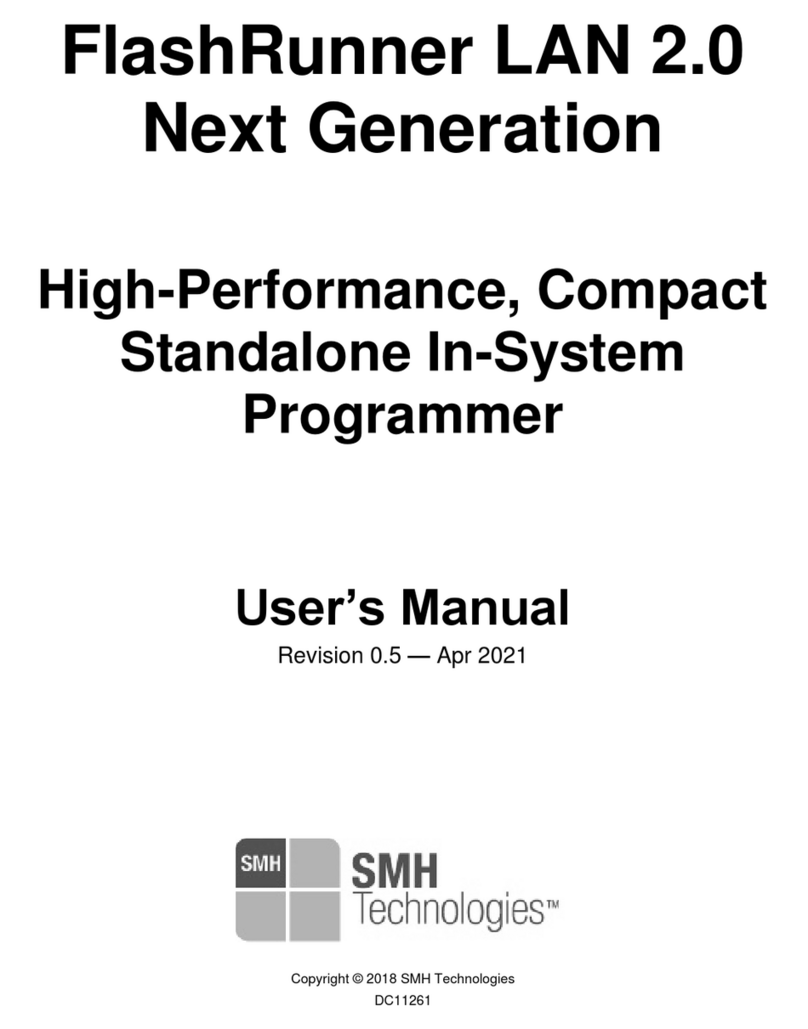
SMH Technologies
SMH Technologies FlashRunner LAN 2.0 User manual
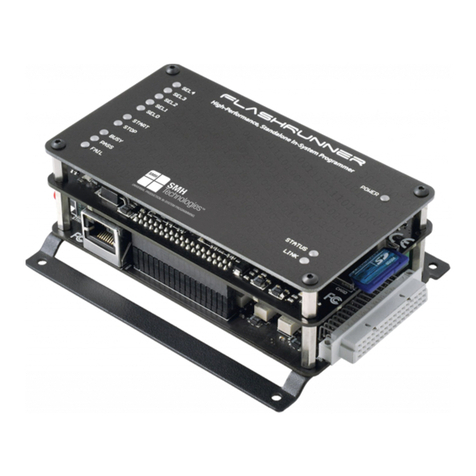
SMH Technologies
SMH Technologies FlashRunner FR01AT0 User manual
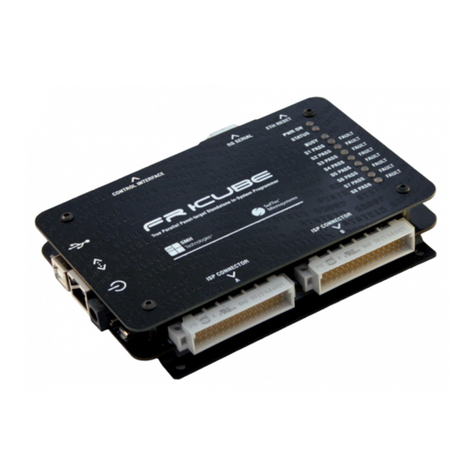
SMH Technologies
SMH Technologies FlashRunner Cube Series User manual
